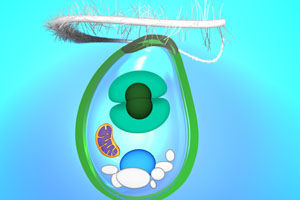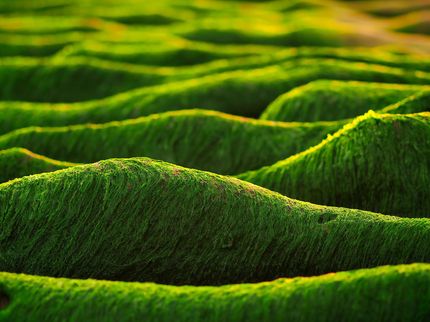The origin of photosynthesis revealed by a "living fossil"
Advertisement
Recently, the complete genome of a glaucophyte alga (Cyanophora paradoxa) has been unraveled by an international consortium led by Dr. Debashish Bhattacharya from Rutgers University (USA). From the University of Freiburg, Dr. Stefan Rensing and Aikaterini Symeonidi (Faculty of Biology), contributed to the analysis of the genome by performing classification and phylogenomic analyses of the encoded transcription factors as well as by checking for and removing genomic contaminations.

alga Cyanophora paradoxa
Susanne Ruemmele, Bhattacharya Lab
Todays plants and algae, which form the base of many food chains, contain little green reactors (plastids) that transform gaseous carbon dioxide to sugar by means of photosynthesis. The genome of the early diverging alga C. paradoxa provides conclusive evidence for the fact that more than one billion years ago plastids were acquired in a single evolutionary event, through so-called primary endosymbiosis. The present day plastids we find in land plants, red and green algae and in the glaucophyte algae, such a C. paradoxa, can all be traced back to that single crucial event, enabling eukaryotes to gain energy from sunlight.
The relatively small (~70Mbp) genome was sequenced and analysed by a team of 30 scientists from six countries. Since it represents the earliest lineage to branch off from what became today's land plants, it is expected to be of high value for many future comparative genomics studies.
Original publication
Price et al. (2012) Cyanophora paradoxa genome elucidates origin of photosynthesis in algae and plants. Science Feb 17th


























































